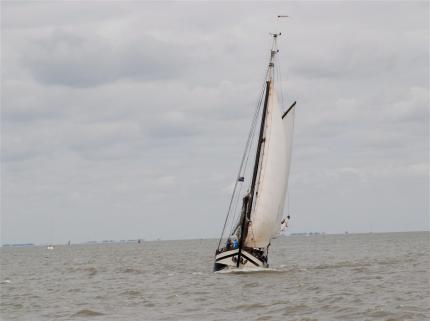
IJsselmeer
The IJsselmeer (or Lake IJssel, alternative international spelling: Lake Yssel) is a shallow lake of 1100 km² in the central Netherlands bordering the provinces of Flevoland, North Holland and Friesland, with an average depth of 5 to 6 m. It is named after the IJssel river that drains into it via a smaller lake, the Ketelmeer. The internal capitalisation in the spelling is caused by the fact that IJ is a digraph in Dutch, possibly a ligature, and sometimes considered a single letter (see IJ (letter)). The IJsselmeer is the fifth largest lake in Western Europe.
The IJsselmeer was created in 1932 when an inland sea, the Zuiderzee, was closed by a 32 km dam, the Afsluitdijk. This was part of a major hydraulic engineering project known as the Zuiderzee Works, that years later led to the reclaiming of land from the IJsselmeer, thereby diminishing the size of the lake.
Traditional boat on the IJsselmeer
In 1975 the IJsselmeer was further split in two by the completion of the Houtribdijk, now also called Markerwaarddijk, which runs from Enkhuizen southeast to Lelystad. This former southern part of the IJsselmeer is now the hydrologically separate Markermeer.
The IJsselmeer functions as a major fresh water reserve, serving as a source for agriculture and drinking water. It also offers plenty of opportunities for various recreational activities.
The province of Flevoland was created in 1986 from the polders reclaimed from the IJsselmeer.

 Tags : Holland pictures
Tags : Holland pictures